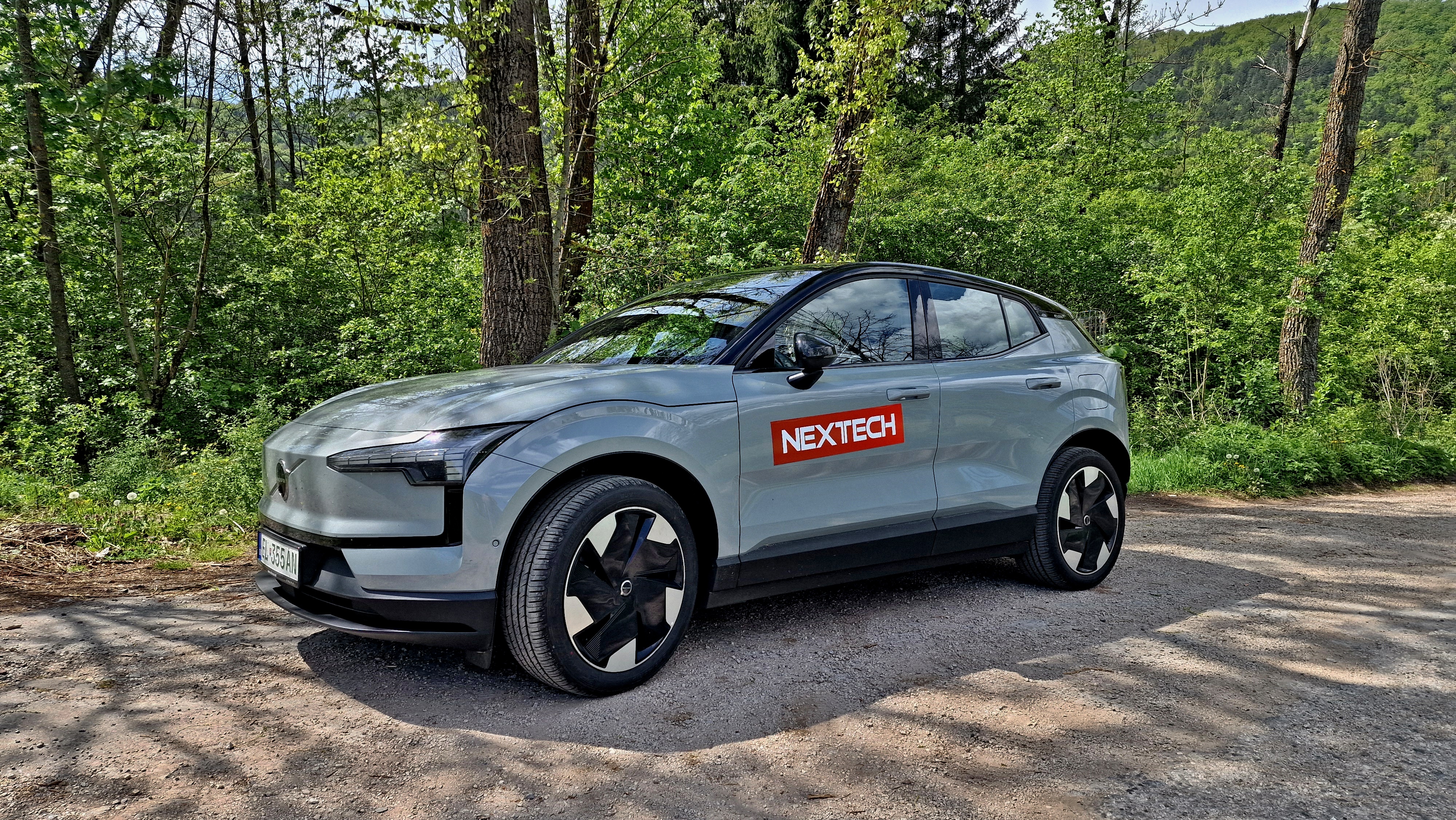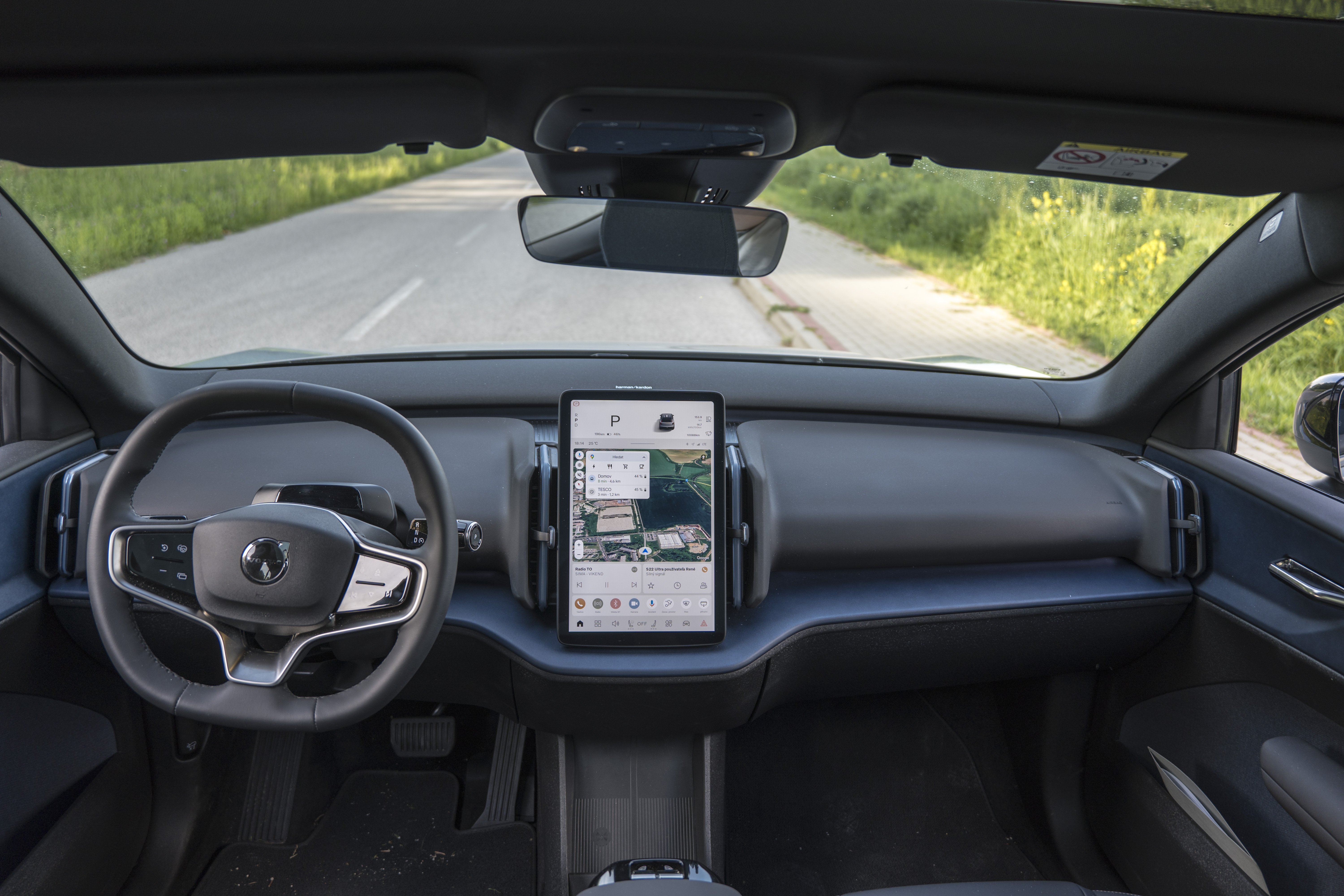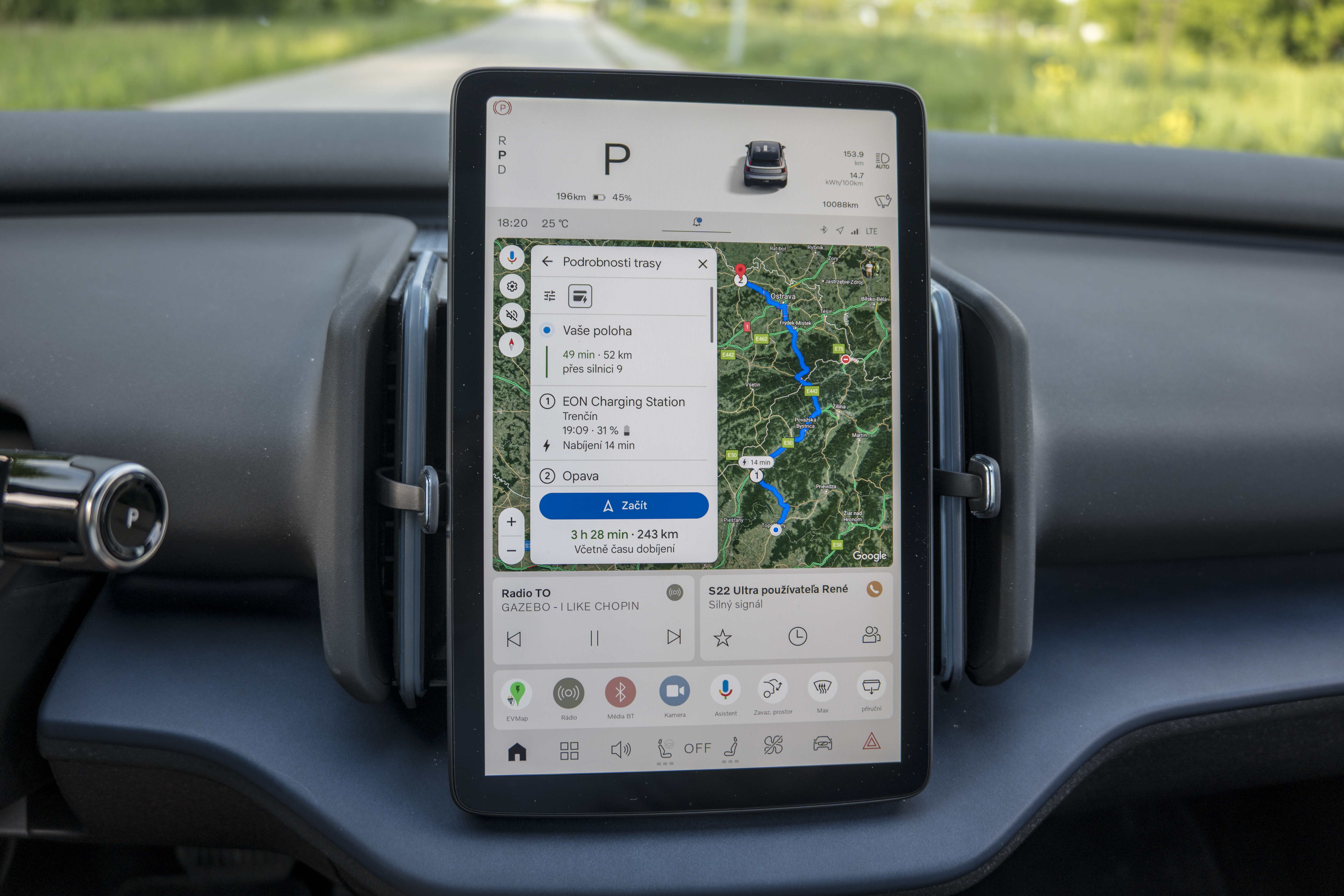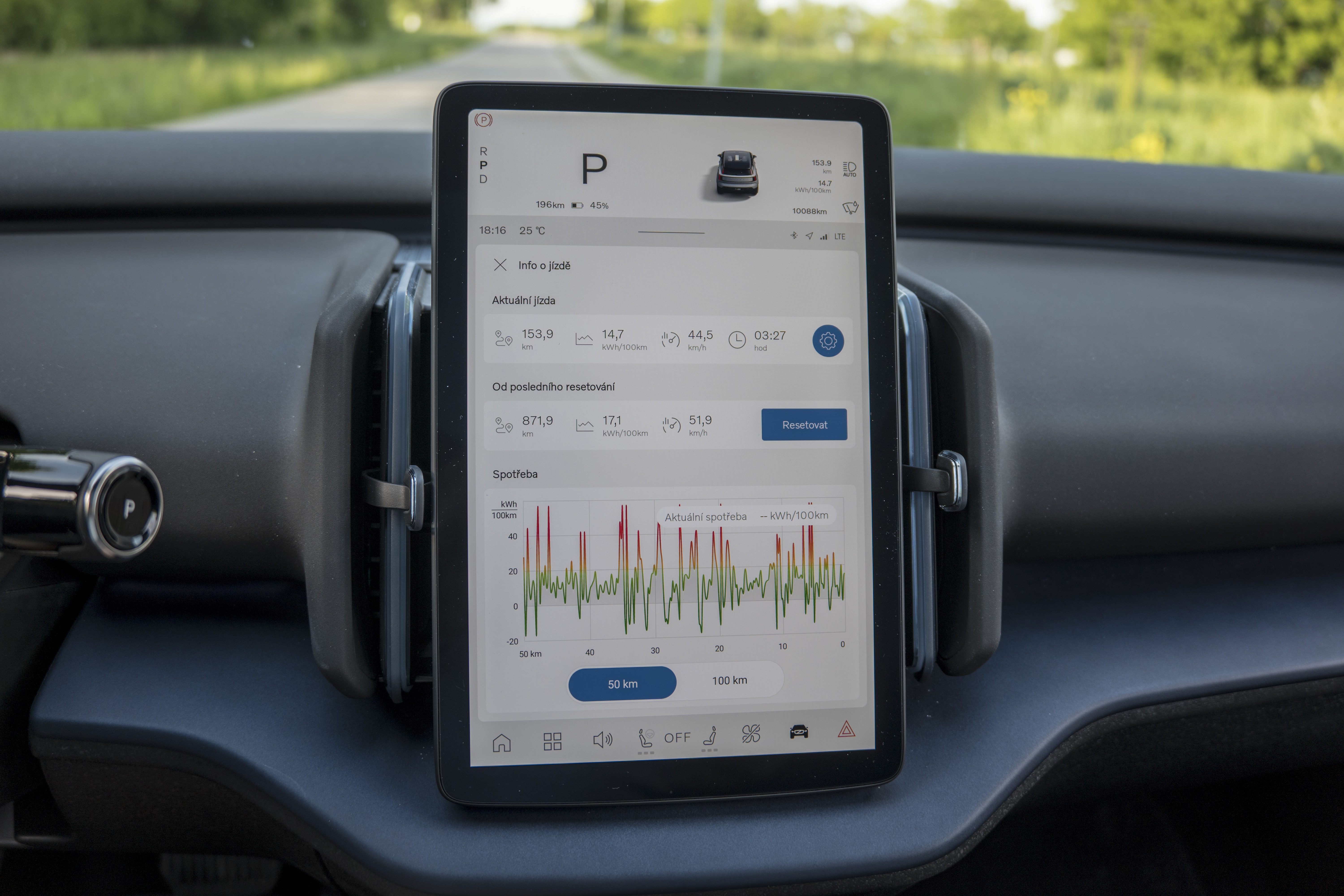The small urban crossover Volvo EX30 is the younger and smaller brother of the C40 and XC40 models. However, it stands on the new platform of the Geely concern, of which the Volvo brand is now a part, also used for other models, such as the Smart One. The novelty is compact, and during its construction, great emphasis was placed on reducing the carbon footprint, which is reduced by up to 25% compared to the C40 and XC40 models over a life cycle of 200,000 km. One of the key steps to achieve these results was to reduce the proportion of aluminum and steel, which have a significant impact on emissions during production, in the vehicle’s construction. About 25% of aluminum and 17% of steel come from recycled sources. In addition, innovations in the vehicle’s interior design make use of the integration of multiple components, reducing the total number of parts used.
The first thing that catches your eye on the new EX30 is certainly the design. The smooth and vertical front fascia is highlighted by a large Volvo logo with a typical slanted bar in the middle and a pair of segmented LED daytime running lights in the shape of Thor’s hammer, which creates an unmistakable light signature. The design is completed by a black strip connecting the two lights in the lower third and a black lower part passing into an inconspicuous lower grille masking the electric door for cooling air. The entire front mask looks very clean and effective. On the side, the massive door moldings with a relatively high-reaching black strip that smoothly transitions to the thresholds will attract attention. The rear part is dominated by large two-part group LED lights, made up of strips, which gradually light up when approaching the car. At the same time, the entire rear part continues in the style of purity and straight lines as in the front. Two-tone painting with a black roof visually reduces the car and gives it a dynamic character.

We were the first to test the version with rear-wheel drive, increased range and the highest Ultra equipment. It has an NMC type battery with a capacity of 69 kWh, of which 64 kWh is used. As is usual with the manufacturer, the car definitely does not lack power. A synchronous electric motor with permanent magnets drives the rear axle with a power of 200 kW and a torque of 343 Nm. Fast charging is ensured by DC charging with a power of 153 kW, and in the highest equipment Ultra, an AC charger with a power of 22 kW is supplied as standard. Thanks to such equipment, the vehicle accelerates from 0 to 100 km/h in 5.3, reaching a maximum speed of 180 km/h. It even allows you to tow a braked trailer weighing up to 1400 kg. These are, of course, more than good parameters for this category of vehicles, and we must also praise the very well-tuned chassis. It copes with the pitfalls of worse roads without any problems, but it also provides enough security during dynamic driving. The performance is very superior even in the rear-wheel drive version.

While the exterior of the vehicle is definitely not to be faulted, after settling into the cabin it is one surprise after another, some better, some worse. The first thing that catches your eye is the large 12.3″ vertical high-resolution display that dominates the dashboard. Once you’ve had enough of looking at it, you’ll find that it’s also the only source of information in the cabin. No instrument panel or head-up You won’t find a display here. Unfortunately, the manufacturer was inspired by the control of Tesla 3 vehicles, which is the worst thing you can find in cars in terms of safety and distraction controls on the steering wheel, but it will take some time to get used to all the nuances, but it’s true that after a week of driving, it was easy to control the lights and wipers on the left side of the steering wheel , shifting the driving modes on the right. The adaptive cruise control is unusually switched on and off by selecting mode D, but you can also switch it on and change the speed with the buttons on the left of the steering wheel. If you have lane keeping on, it is not possible to select a speed higher than 130 on the cruise control km/h. Of course, it can be exceeded manually. The right part of the steering wheel is reserved for multimedia control and other functions. In addition, there are mechanical controls only in front of the armrest in the center section. A pair of window controls have been moved here, with which you can change the function to the rear windows with the button between them, as we know it for example from the VW ID models. In addition, there are door lock buttons. Controlling the windows on the center console is a bit confusing, but the owner gets used to it quickly.

It is interesting that the car has no box in front of the passenger, it is partially replaced by a smaller compartment in the middle, which opens electrically from the display. Otherwise, there is plenty of storage space, including a charging pad for a mobile phone. Entry into the car is also unusual, at least in the Ultra version. You only have a small box about the size of the control, but it has no button or spare key. It is used for contactless entry into the car. If the battery in it accidentally runs out, the car can be opened by placing the box on the B pillar, where there is an NFC symbol, and by placing it on the wireless charger, which is also an NFC reader, the car will also start. The second option is to use a mobile application. The speed is displayed in the upper left corner of the display and next to it the current situation on the road is graphically represented, also according to the Tesla model. The multimedia system uses the powerful Snapdragon Cockpit Platforms technology from Qualcomm Automotive under the Android Automotive OS, so you no longer need to connect Android Auto to your car. Navigation based on Google Maps is built right into the system, but thanks to integration with the car, it also provides electrical intelligence functions, so that when destinations are offered or entered, it will also display the battery balance at the destination. When planning the route, it also plans the necessary charging breaks. For example, YouTube is pre-installed, but you can find a lot more in the app store – including streaming services like Spotify or various planners and maps for electric cars. The latest version of the system has refined graphics, works quickly and is easy to control. Control of vehicle systems is also integrated in it. As part of the simplification, there is an interestingly designed audio system, which uses only a soundbar located under the front window instead of the standard speakers. Due to the good soundproofing of the car, it provides high-quality sound for all passengers. The only complaint about it is the placement of the silver Harman Kardon logo in its center, which is very distractingly and permanently reflected on the windshield. Part of our equipment was also a non-opening panoramic window covering almost the entire roof. However, it has no shading system, and despite having isothermal glass that lets in a minimum of heat, crew members can be dazzled underneath when driving under the harsh sun. Also, when driving at night, flashing street lights mainly disturb the rear passengers.

The Volvo EX30 is designed to provide not only comfort and safety, but also an excellent driving experience. With a low center of gravity and even weight distribution, the vehicle is agile and stable, which is ideal for both urban and inter-city roads. Thanks to advanced systems such as automatic intersection braking and driver attention monitoring, the Volvo EX30 is equipped to tackle modern road challenges. The sound deadening of the vehicle and the tuning of the chassis are excellent. Most of the controls are good after a short time getting used to them, but for example entering the manual switching of the lights or some other functions via the display is very impractical and very distracting while driving, so there are many topics for improvement. It’s pretty cool that despite the fact that Volvo belongs to the premium category, even in the highest equipment, the customer will only get regular LED lights with automatic switching. Electric seats are standard in the highest equipment, in the middle for an extra charge. No more advanced functions can be ordered. On the other hand, in our top trim, you get a large number of assistance systems, including automatic parking, an excellent 360° camera system, adaptive cruise control and much more.
TESTY:
- Consumption in the test (kWh/100 km) 14.7 – 17.1 – 21.2
- Test range (km) 435 – 305
- AC charging power on 22 kW 3f charger (kW) 22
- Max. DC charging power UFC charger 350 kW (kW) 158
- Charging time 10-80% (min) 25
Specifications:
Volvo EX30: Battery – total capacity 69 kWh, usable 64 kWh, driven rear axle, engine power 200 kW, torque 343 Nm, connector type for DC charging CCS, max. DC charging power 153 kW, AC charger power 22 kW, AC charging type (number of phases) 3, max. speed 180 km/h, acceleration from 0 to 100 km/h 5.3 s, WLTP range 475 km
PROS, CONS:
+ Performance, driving characteristics, charging options, design, consumption
– Non-standard control of some functions that you need to get used to
- Price of the model from (with VAT): 37,950 euros
- Tested vehicle (with VAT): EUR 50,210
Source: www.nextech.sk


